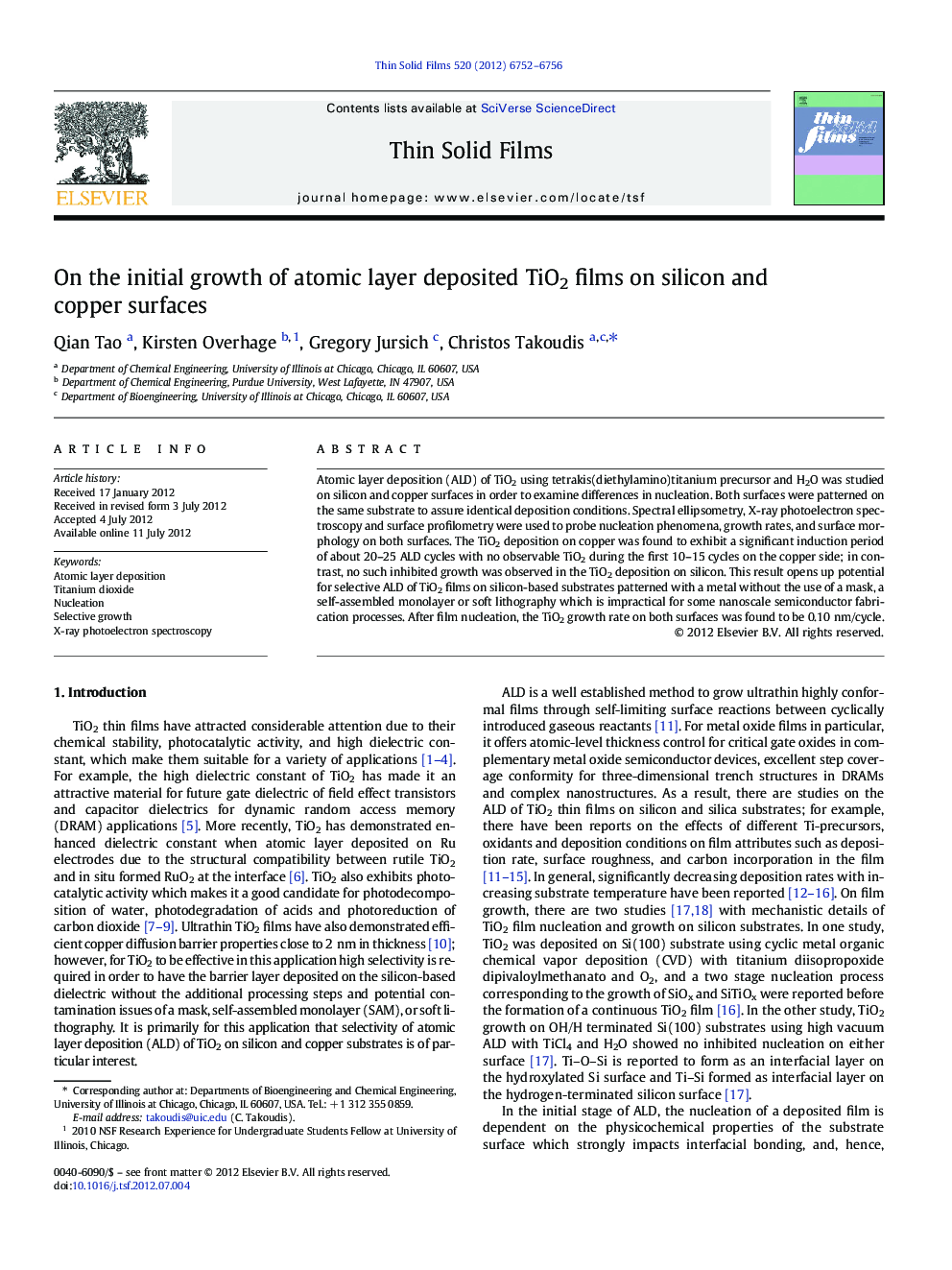| Article ID | Journal | Published Year | Pages | File Type |
|---|---|---|---|---|
| 1666983 | Thin Solid Films | 2012 | 5 Pages |
Atomic layer deposition (ALD) of TiO2 using tetrakis(diethylamino)titanium precursor and H2O was studied on silicon and copper surfaces in order to examine differences in nucleation. Both surfaces were patterned on the same substrate to assure identical deposition conditions. Spectral ellipsometry, X-ray photoelectron spectroscopy and surface profilometry were used to probe nucleation phenomena, growth rates, and surface morphology on both surfaces. The TiO2 deposition on copper was found to exhibit a significant induction period of about 20–25 ALD cycles with no observable TiO2 during the first 10–15 cycles on the copper side; in contrast, no such inhibited growth was observed in the TiO2 deposition on silicon. This result opens up potential for selective ALD of TiO2 films on silicon-based substrates patterned with a metal without the use of a mask, a self-assembled monolayer or soft lithography which is impractical for some nanoscale semiconductor fabrication processes. After film nucleation, the TiO2 growth rate on both surfaces was found to be 0.10 nm/cycle.
► Study of initial growth of atomic layer deposited TiO2 films on Si and Cu surfaces. ► TiO2 deposition on copper is found to exhibit a significant induction period. ► Selective initial deposition on Si substrates patterned with Cu. ► Selective deposition without the use of masks, soft lithography or other monolayers.
